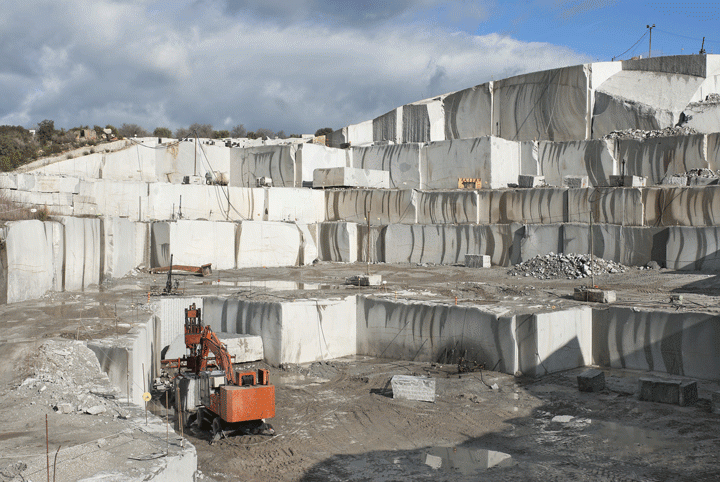Unlocking Natural Treasures: Granite Quarries in South Africa Revealed
Unlocking Natural Treasures: Granite Quarries in South Africa Revealed
Blog Article
Uncovering the Rich History and Sustainable Practices of Granite Quarrying
As we depend on the precipice of uncovering the intricate tapestry of granite quarrying, a trip through time discloses not simply the physical act of extracting rock but likewise the cultural and historic value woven into the really material of this technique. From the ancient origins that laid the structure for modern quarrying strategies to the sustainable methods that are forming the future of this market, each chisel mark on granite surface areas narrates waiting to be uncovered (granite quarries in south africa). The tradition of granite quarrying extends much beyond mere extraction; it is a testament to human resourcefulness, strength, and the enduring appeal of this majestic rock
Old Origins of Granite Quarrying
Going back to old worlds, the method of quarrying granite has been an integral part of human background and architectural innovation. The earliest evidence of granite quarrying go back to old Egypt, where large pyramids and intricate sculptures were crafted from this durable stone. The Egyptians made use of primitive devices to draw out granite blocks from quarries, showcasing the significance of this material in their huge building and constructions.
Moving on in history, the Greeks likewise made significant payments to the quarrying of granite. The Greeks used granite in numerous architectural marvels, such as holy places and statues, showing their skill in shaping and sculpting this sturdy rock. The Romans further refined the methods of quarrying granite, utilizing advanced devices like knives and hammers to remove and form granite for their famous frameworks.
Via the centuries, the technique of quarrying granite has actually progressed, with modern technologies improving effectiveness while preserving the timeless appeal of this all-natural stone - granite quarries in south africa. From old worlds to contemporary builders, the legacy of granite quarrying remains to form our globe
Advancement of Quarrying Methods
The advancement of quarrying methods has actually been noted by a continuous development towards greater performance and accuracy in extracting granite. Early quarrying strategies involved hand-operated labor with fundamental devices such as knives, hammers, and wedges to draw out granite blocks from the planet.
In more recent times, the arrival of machinery reinvented the quarrying market, allowing quicker extraction rates and raised efficiency. Technologies such as ruby cord saws, high-pressure water jets, and pneumatic drills have ended up being basic in modern-day quarries, enabling for specific cutting and decreased waste. In addition, developments in computer-controlled tools and 3D modeling have maximized quarrying operations, resulting in marginal environmental impact and boosted sustainability practices. As the need for granite remains to rise, the advancement of quarrying techniques stays integral to conference sector requires efficiently and sustainably.
Social Relevance of Granite
Granite holds a profound social value throughout different pop over to this site civilizations due to its long-lasting visibility in architectural masterpieces and prized monoliths. The cultural importance of granite extends past its physical qualities; it embodies strength, security, and timelessness, making it a symbol of sustaining traditions and traditions.

Sustainable Practices in Quarrying
Amidst the abundant background of granite quarrying and its cultural significance exists an expanding emphasis on lasting techniques within the market. As environmental awareness and concerns concerning source exhaustion have enhanced globally, the quarrying sector has actually progressively accepted sustainable techniques to decrease its impact on the environment and surrounding communities.

Additionally, improvement and rehab of quarry websites post-extraction are indispensable to lasting techniques. By restoring quarried areas to an all-natural or valuable state, such as developing wild animals environments or entertainment rooms, quarriers can counter the ecological impact of their operations and contribute positively to the local ecosystem.
Heritage of Granite Quarrying
With a historical backdrop steeped in workmanship and industrial development, what enduring impact has granite quarrying left on the landscape of modern-day culture? The tradition of granite quarrying transcends mere extraction methods; it has actually formed building marvels, metropolitan landscapes, and cultural heritage worldwide. The resilient nature of granite best site has actually made it a preferred choice for monuments, structures, and facilities, standing as a testimony to the skill and artistry of quarry employees across generations.
Moreover, the financial footprint of granite quarrying can not be overlooked. The sector remains to provide work possibilities and drive regional economic climates in regions where granite removal is common. It has additionally stimulated technical improvements in quarrying methods and tools, causing much more reliable and sustainable techniques.
In regards to sustainability, the tradition of granite quarrying includes initiatives to alleviate environmental influences with reclamation tasks and responsible source administration. By balancing financial interests with environmental stewardship, the industry makes every effort to make certain that future generations can proceed to take advantage of this enduring natural source.
Final Thought

Report this page